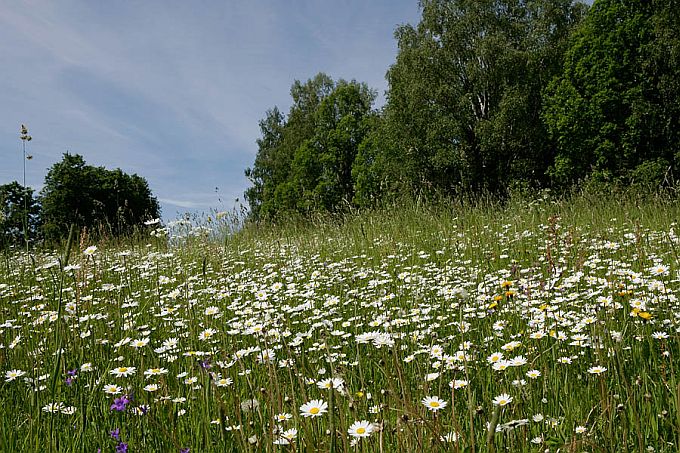Oxeye daisy Harilik härjasilm Leucanthemum vulgare
.
The flower of the oxeye daisy resembles that of the corn chamomile, but it is nearly twice as big. The corn chamomile, earlier a common weed in fields, has by now become so rare that even many botanists have never seen it growing.
The habitats of the oxeye daisy likewise become rarer: fallow fields and natural pastures are disappearing. On road verges they can be seen, the soil there is generally sandy and vegetation sparser which suits the oxeye daisy. Regrettably the road maintenance crews try to mow the road verges for Midsummer and so oxeye daisies, bellflowers, catchflies,
The flowers (capitulas) of the oxeye daisy with their yellow centre and white ray-florets are arrestingly beautiful. In addition the oxeye daisy flowers for a very long time, beginning in June and ending in September, but occasionally you can pick oxeye daisies in a fallow field even in October.
„Loves, loves not“ or ”lucky flowers” are the best known romantic names of the oxeye daisy, more naturalistic ”hen’s butts“.
Meadow with oxeye daisies
NB. Many Estonians still know the ox-eye daisy, "härjasilm", as "karikakar", which is now however the name of corn chamomile




